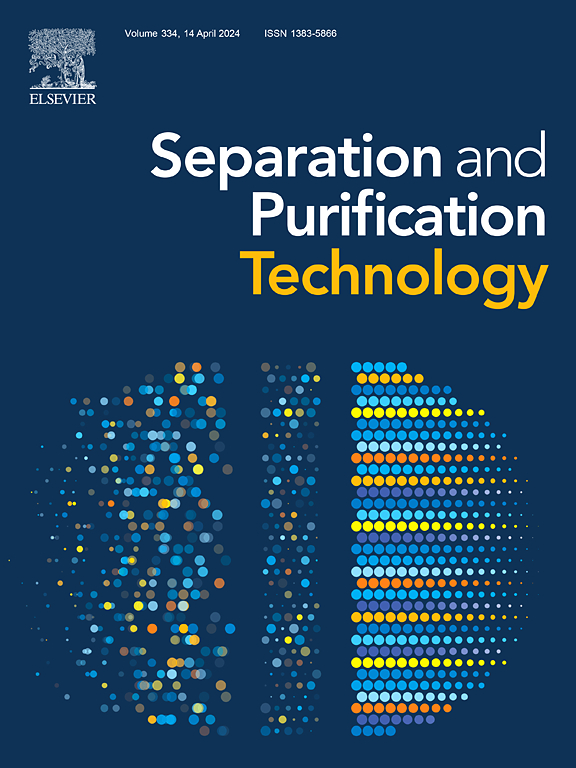Effect of the temperature control device on the emission character of condensable particulate matter from industrial heating plant
IF 8.1
1区 工程技术
Q1 ENGINEERING, CHEMICAL
引用次数: 0
Abstract
Condensable particulate matter (CPM) is one of the major emissions of primary particles in coal combustion. The removal efficiency of CPM using the temperature control device (TCD) based on the concept of a heat exchanger application with lower capital cost was investigated in an industrial heating plant. TCD operates without water and flue gas interactions and ensures efficient control of CPM emissions, and it also minimizes the potential ion accumulation in recycled WESP water, which could otherwise hinder the removal of CPM. The total mass and chemical speciation were determined by EPA method 202. The total mass of CPM was removed by 25.7–60.6% after the TCD. The CPM captured by CPM filters (CPMspa) was down to around 15––21% and the FPM also was reduced by around 11–––26%. The occurrence of vapor gradient forces and thermophoresis forces could enhance the contact between CPM and water film, which was built up on the surface of the cooling tubes during the process of TCD. Then, part of the CPM was removed with a water film. The low capital and operating cost of TCD can be installed in the industrial heating plant or be set up after the WESP in the coal-fired power plant to enhance the CPM removal efficiency.温度控制装置对工业加热设备可凝结颗粒物排放特性的影响
可凝结颗粒物(CPM)是燃煤过程中主要的一次颗粒物排放之一。基于热交换器应用概念的温度控制装置(TCD)具有较低的资本成本,我们在一家工业供热厂对其去除 CPM 的效率进行了研究。TCD 在运行时不会与水和烟气发生相互作用,可确保有效控制 CPM 的排放,还能最大限度地减少 WESP 循环水中潜在的离子积累,否则会阻碍 CPM 的去除。采用 EPA 方法 202 测定了总质量和化学式。经 TCD 处理后,CPM 的总质量去除率为 25.7%-60.6%。CPM 过滤器(CPMspa)捕获的 CPM 降低了约 15-21%,FPM 也降低了约 11-26%。在 TCD 过程中,蒸汽梯度力和热泳力的出现增强了 CPM 与冷却管表面形成的水膜之间的接触。然后,部分 CPM 被水膜带走。TCD 的投资和运行成本较低,可安装在工业供热厂中,或在燃煤电厂的 WESP 之后安装,以提高 CPM 的去除效率。
本文章由计算机程序翻译,如有差异,请以英文原文为准。
求助全文
约1分钟内获得全文
求助全文
来源期刊

Separation and Purification Technology
工程技术-工程:化工
CiteScore
14.00
自引率
12.80%
发文量
2347
审稿时长
43 days
期刊介绍:
Separation and Purification Technology is a premier journal committed to sharing innovative methods for separation and purification in chemical and environmental engineering, encompassing both homogeneous solutions and heterogeneous mixtures. Our scope includes the separation and/or purification of liquids, vapors, and gases, as well as carbon capture and separation techniques. However, it's important to note that methods solely intended for analytical purposes are not within the scope of the journal. Additionally, disciplines such as soil science, polymer science, and metallurgy fall outside the purview of Separation and Purification Technology. Join us in advancing the field of separation and purification methods for sustainable solutions in chemical and environmental engineering.
 求助内容:
求助内容: 应助结果提醒方式:
应助结果提醒方式:


